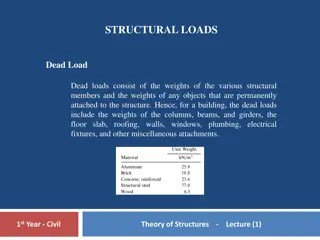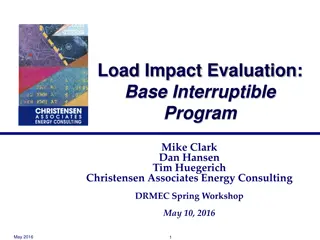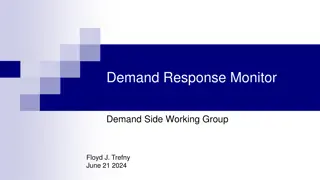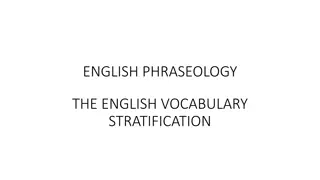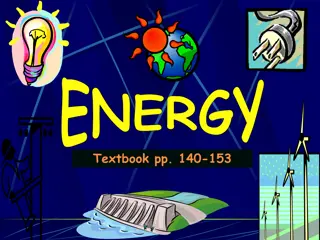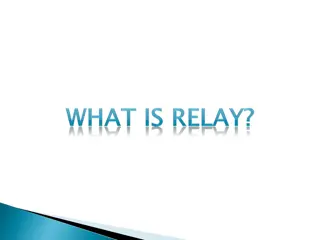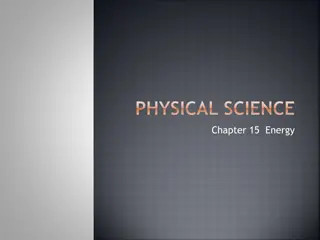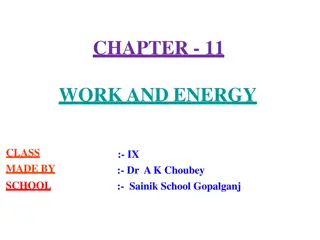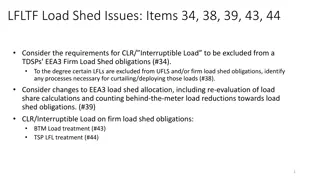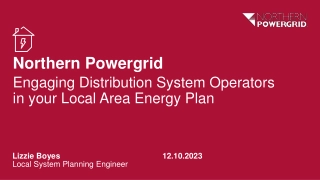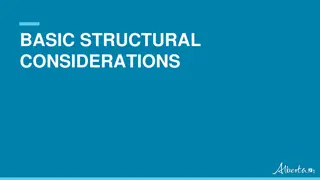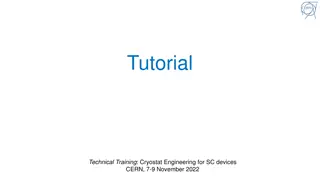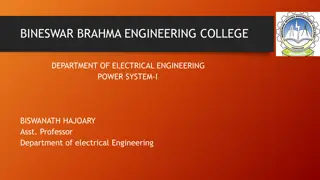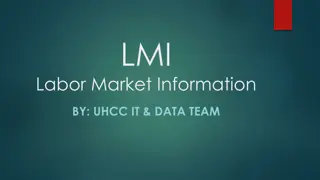Understanding Definitions and Classifications for Large, Flexible, and Interruptible Loads in the Energy Industry
Exploring the definitions, requirements, and benefits of large, flexible, and interruptible loads in ERCOT processes. Learn why these classifications are necessary, how they differ from traditional loads, and the implications for grid reliability and system resiliency.
Download Presentation

Please find below an Image/Link to download the presentation.
The content on the website is provided AS IS for your information and personal use only. It may not be sold, licensed, or shared on other websites without obtaining consent from the author. Download presentation by click this link. If you encounter any issues during the download, it is possible that the publisher has removed the file from their server.
E N D
Presentation Transcript
1 Definitions for Large Load Flexible Load Interruptible Load PRESENTED BY BOB WITTMEYER BOB@LONGHORNPWR.COM SEPTEMBER 26, 2022
ERCOT Process 2 Technology Neutral/Agnostic We do it for Generation, we should do the same for Loads Remove Barriers to entry We do not enable business plans
Why do we need definitions 3 Large loads coming to ERCOT Their processes are not harmed by fast down ramping. They can control load levels accurately in real time. They do not need/or desire to be served when system conditions are tight, or prices are high. Two definitions were identified as being needed to accommodate these loads. Large Flexible Loads (LFL 4) Interruptible Loads (LFL 5)
Definitions requirements & desires 4 Interruptible Flexible Load Excluded from TDSP s Firm Load Shed Obligation (will be off before Firm Load Shed either self deployed or TDSP/ERCOT Control). Participates in AS AS requirements unchanged. Requires new definition for Interruptible for resources which cannot provide AS but can still be interrupted to avoid transmission or system capacity needs. Identified in CDR/SARA as Load not served during times when Grid is under stress. Identified to TDSP as load that can be shed for local issues. Potential to have different or dynamic interconnection limits thereby enabling more robust interconnections.
Ways to classify Flexible & Interruptible Loads 5 Flexible Load Interruptible SCED Flex CLR N CLR CLR N CLR Interruptible SCED Flex AS provision could be limited for Load that is subject to transmission interruptions. Existing AS Requirements not changed. Flexible Load would be subject to AS failure to provide penalties. Interruptible load could easily be excluded from CDR/SARA Would need to determine if all CLR and NCLR can be excluded in CDR/SARA.
4 Presentations today for different Definitions but all are basically the same. 6 A large load is 75.0 MW or greater Agreement Load Resources are Flexible General Agreement Interruptible Load can be curtailed for transmission or system wide capacity needs Agreement
Small Group 7 Definition of Large Load A Load greater than or equal to 75.0 MWs. Definition of Flexible Load Flexible Load is non-firm or non-consequential load, which is qualified and participates in ERCOT ancillary services and/or other services that may interrupt or reduce power consumption that support system resiliency or mitigate transmission constraints. Such services include: CLR NCLR Registered and qualified with ERCOT as a Controllable Load Resource, or Registered and qualified with ERCOT as a Non-Controllable Resource, or SCED Flexible Load (CLR without a PFR requirement, or follows Loads in SCED concept) A load dispatched by SCED and can operate at an ERCOT specified Base Point and responding by changing its load level to subsequent Base Points issued by ERCOT at a specified ramp rate, or Interruptible Load 1. Provides continuously telemetered load power information to ERCOT, updated every 2 seconds, If load is co-located with generation, the generation provides continuously telemetered power, updated every 2 seconds, is not considered an ERCOT Load Resource and does not provide an Ancillary Service, can interrupt it s load at a specified ramp rate when instructed by ERCOT for transmission issues or system capacity needs provides a button to the TDSP to interrupt it s load if not already interrupted, and agrees not to return to normal load levels until instructed by ERCOT. 2. 3. 4. 5.
Other Definitions 8 Interruptible Load: Load registered to be curtailable by ERCOT using Manual Load Shed instruction through the Load s QSE and thereby excluded from TO s Manual Load Shed and UFLS obligation and, if market-based congestion management techniques embedded in SCED, approved CMP, and ERCOT instructing Resources to change output will not be adequate to resolve one or more transmission security violations that would be fully or partially resolved by the curtailment of this Load, then curtailable by ERCOT to maintain reliability. Interruptible Load, when providing Ancillary Services, shall be curtailed through the processes specified for the respective Ancillary Service. Flexible Load is non-firm or non-consequential load, willing to participate in ERCOT, TSP, and other services that may interrupt or reduce power consumption that support system resiliency or mitigate transmission constraints.
Suggestion for todays meeting 9 The definitions are all reasonably close from the perspective of can we find a faster process to integrate Flexible or Interruptible into the grid . Let s the ERCOT/TDSP s have a month to see if they see any material difference in the definitions that could enable some modified interconnection process.


